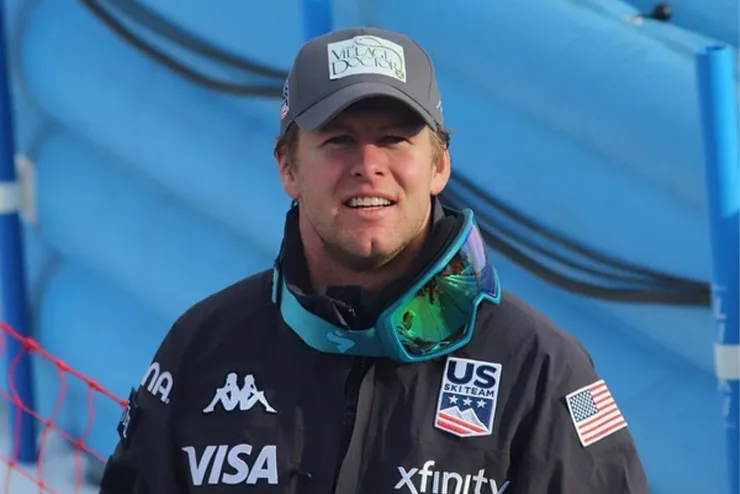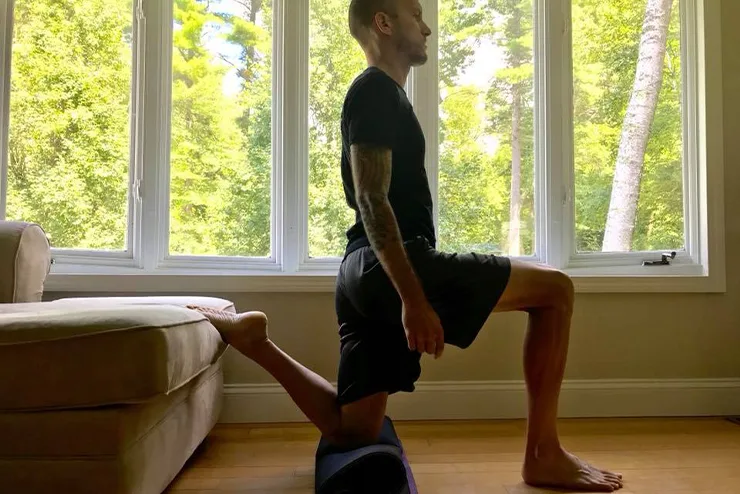
Hello Village Doctor family! For those of you who don’t know me, my name is Erik Arvidsson. I am a professional Alpine Skier on the US Ski Team. My family has been Village Doctor patients since Dr. Weiss opened the clinic, and now I am fortunate enough to represent the Village Doctor on my helmet during the FIS Alpine World Cup Tour. Welcome to my first blog post! Today I am here to talk about 5 ways you can prevent injury for the Athletic Skier as we enter the heart of the ski season.
1. It may sound like an oversimplification, but the best way to avoid injury on the mountain is to keep up your general fitness. Sure, there are lots of fancy machines and exercises you can do specifically for skiing, but you won’t have the stamina for that if you aren’t keeping your heart and muscles healthy with solid endurance and strength training. Whether it’s cycling, swimming, general fitness training, or Barry’s and other exercise classes; the best way to prevent injury for an Athletic Skier during the ski season is to keep on a consistent schedule of exercise a few times a week leading into the winter. This will keep your stamina high so you can stay energized for an entire day of charging on the slopes!
2. Once you have ensured your general fitness is at a high level you can start to think about some specific areas to focus on. One part of the body that is often overlooked is the posterior chain (glutes, hamstrings, calves, etc). While you may not feel them burning at the bottom of your ski runs, they are ultra-important when it comes to protecting the ligaments in your knees as well as your back. Get these muscles strong before the season and maintain them throughout the winter. Your quads get plenty of exercise from skiing in the winter, but your glutes and hamstrings will often deteriorate. When you get a chance to hit the gym in the winter, focus on exercises for the glutes and hamstrings, RDL’s*, hamstring curls, lateral band walks, etc. This will help you avoid those nasty knee and back injuries we often see from skiing!
3. Keep your hip flexors loose! While it may not seem obvious, skiing all day is a lot like an active version of sitting in a desk chair. You are always in a flexion position (chest forward over your torso). It’s so important to unwind this tightness after a long day on the hill. I love to use a lacrosse or softball to roll out these muscles. Also, you can use your couch to do a great hip flexor stretch. Keeping your hip flexors stretched out will help keep your back happy while skiing.

4. Warmup before you go on the hill! 5 minutes on the spin bike, a few leg swings, some squats in your ski boots, some pushups, or some crunches can go a long way to preventing injury for an Athletic Skier. You may think that there is no need to do this since you can take a few slow runs to get going, but injuries often happen the first few runs of the day. Skiing is an outdoor sport, and you can’t always control what goes on around you. Make sure you’re warmed up so you can handle whatever challenges mother nature throws your way.
5. Start slowly at the beginning of the season! Just because the conditions are perfect on your first day of the season, it doesn’t mean you need to ski your hardest. As athletes, my teammates and I have at least 50 days on snow before we step into the start gate and race down the mountain. Although we all practically grew up on skis, at the beginning of the season we often go back to slow skiing drills, just to make sure our touch and feeling for the snow is back before we go for it 100%. Take your time easing into the season so that you can get as many days as possible. Don’t push yourself before you’re ready and risk taking yourself out for the year!
I hope you enjoy these tips and are enjoying the once in a decade winter that is happening up in Tahoe! Stay tuned for more ski and fitness tips.
-Erik
*Dr. Weiss note: RDL stands for Romanian Deadlift, which is a weightlifting exercise targeting the muscles of the posterior chain, including the hamstrings, glutes, and lower back. It involves standing with a barbell in front of the body, bending at the hips to lower the bar down the front of the legs while keeping the back straight and the knees slightly bent, and then returning to the starting position by driving the hips forward. The Romanian Deadlift is often used as a strength and conditioning exercise for athletes, as well as for general fitness, to improve posture, stability, and balance.
Are you an athletic skier looking to prevent injuries on the slopes? Look no further than The Village Doctor! Call us at (650) 851-4747 to learn more about our practice. Let us help you achieve your skiing goals without the worry of injury.
Erik Arvidsson, February 2, 2023


